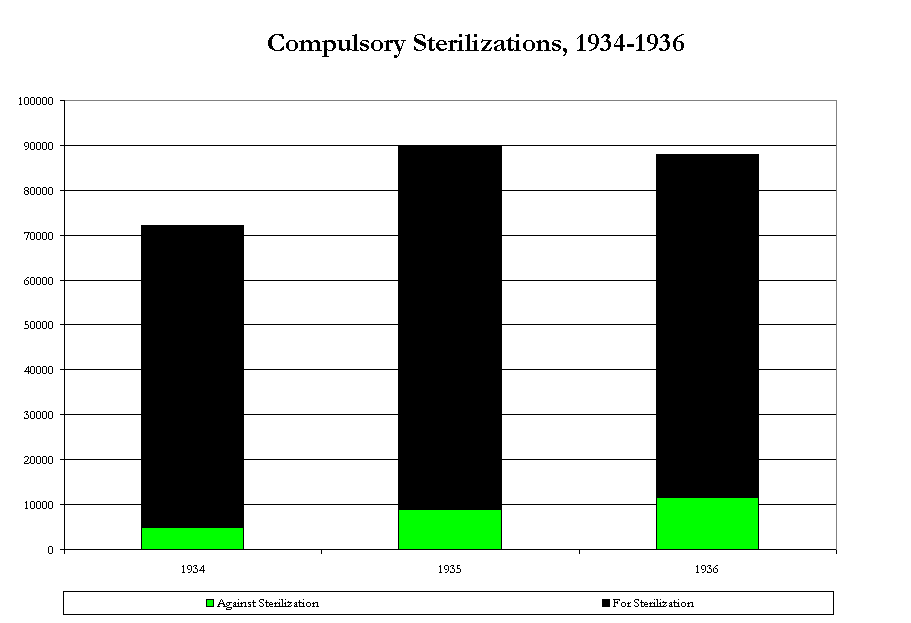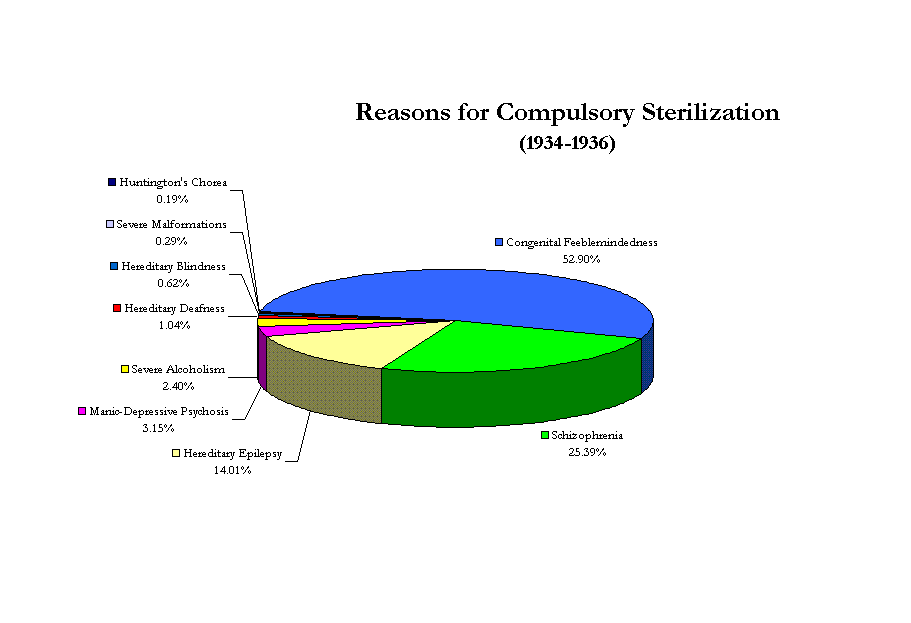
As this chart shows, the vast majority of cases appearing before the Hereditary Health Courts were approved for compulsory sterilization under the Law for the Prevention of Hereditarily Diseased Offspring (or “Sterilization Law”). The law had been passed by the Hitler cabinet on 14 July 1933, published on 25 July and took effect on 1 January 1934. Enforcement depended on denunciations by physicians, and the Hereditary Health Courts were quickly inundated by them: 388,400 denunciations arrived in 1934 and 1935, the largest share (35%) from directors of health-related institutions, 21% from public health officials, and 20% from other physicians. But not all denunciations resulted in court proceedings: of the 388,400 denunciations, only two thirds actually made it to court. As the chart shows, however, almost all cases that did receive a hearing ended with a decree that the “defendant”should be sterilized, with or without her/his consent.
The pace of work at Hereditary Health Courts exceeded the ability of
physicians to perform the sterilizations. In 1934, for example, only slightly
more than half the number of mandated sterilizations were actually performed;
in 1935, as a result, more sterilizations were carried out than were decreed
by the Hereditary Health Courts. In each of the three years, the number
of men sterilized was slightly higher than women, mainly because the procedure
is simpler. This is reflected in the mortality rate due to sterilization:
far more women died as a result of the procedure than men did. Exact figures
for the period after 1936 do not survive, but there is general agreement
among historians that a total of about 300,000 had been sterilized by the
outbreak of war, and an additional 75,000 between 1939 and 1945.
The following chart shows the reasons given in Hereditary Health Court
decisions for ordering compulsory sterilization between 1934 and 1936.
Of these, the largest number by far were for "congenital feeblemindedness,"
over half, followed by schizophrenia (25.39%) and hereditary epilepsy (14.01%).
Approximately the same numbers of men and women were sterilized for each
diagnosis, with one major exception: in the largest category ("congenital
feeblemindedness"), women outnumbered men by 9,169 to 7,901.

Source: Henry Friedlander, The Origins of Nazi Genocide: From Euthanasia to the Final Solution (Chapel Hill: University of North Carolina Press, 1995), 27-29.